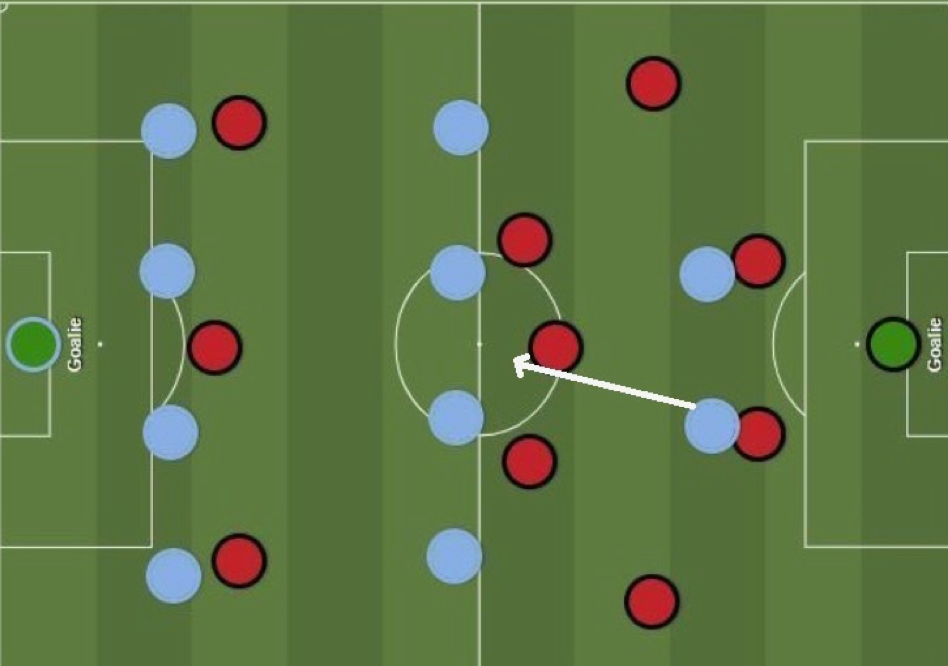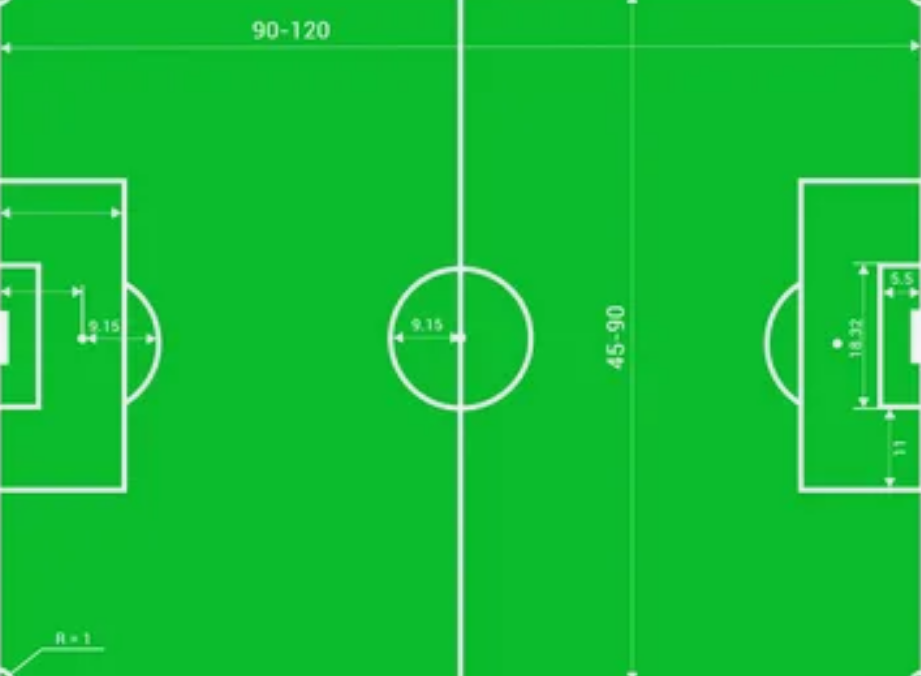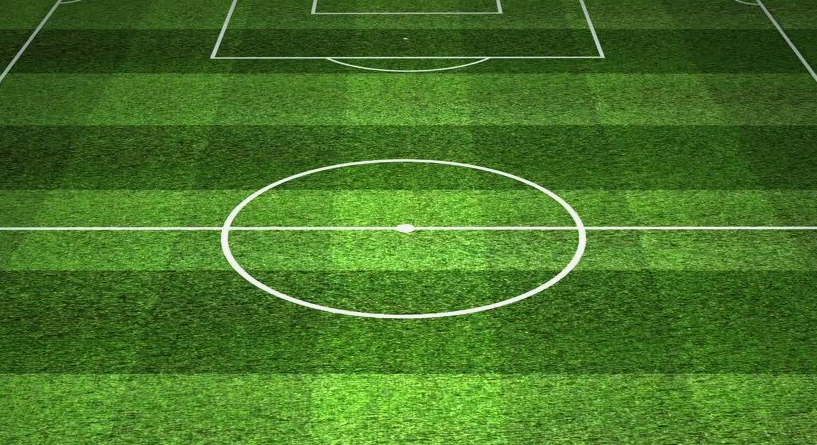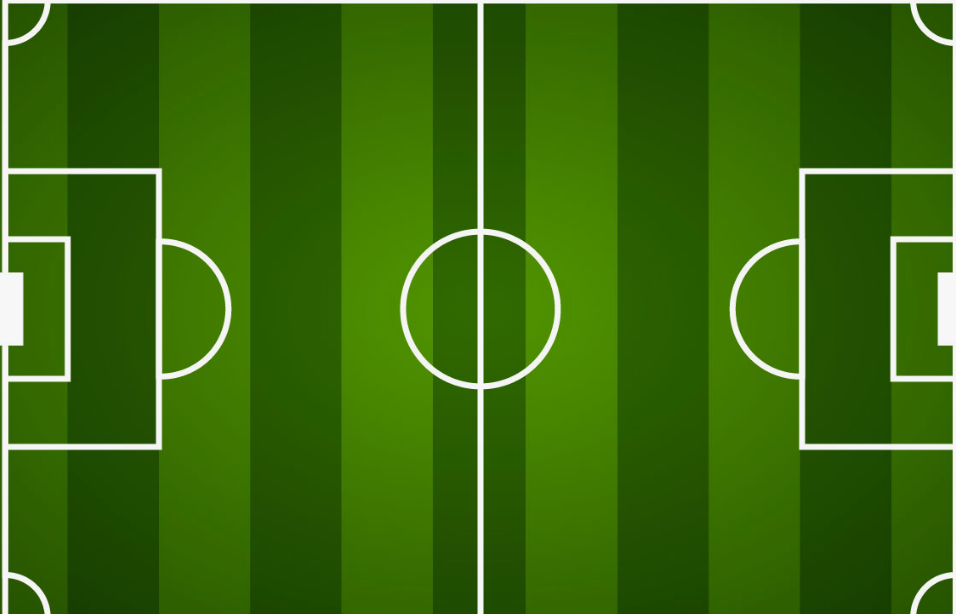A soccer field diagram displays the layout of a soccer field with key markings and dimensions. It is essential for understanding the field’s structure. Soccer field diagrams provide a visual representation of the field’s features, such as the center circle, penalty box, and goal area, helping players and coaches strategize and plan gameplay effectively. These diagrams are used in training sessions, matches, and coaching sessions to enhance players’ understanding of the field and improve their performance.
Understanding the various parts of a soccer field is crucial for players to navigate the field, position themselves correctly, and execute plays efficiently. By referring to a soccer field diagram, players can develop their spatial awareness and tactical awareness on the field.
Soccer Field Diagram

Dimensions of A Soccer Field
When it comes to the game of soccer, the dimensions of the soccer field play a crucial role in shaping the gameplay. From the length and width of the field to the penalty box and goal area, every aspect is meticulously designed to ensure fair play and strategic maneuvering. Let’s delve into the dimensions of a soccer field and explore its various components.
Length and Width- Soccer Field Diagram
The length of a standard soccer field ranges between 100 to 130 yards, while the width varies from 50 to 100 yards. These dimensions provide ample space for players to showcase their skills and tactics, fostering an environment for dynamic gameplay.
Penalty Box and Goal Area- Soccer Field Diagram
The penalty box, also known as the 18-yard box, is a crucial area on the soccer field. It extends 18 yards from the goal line and 44 yards in width. This area is where fouls committed by the defending team result in penalty kicks for the opposing team. Additionally, the goal area, commonly referred to as the 6-yard box, extends 6 yards from the goal line and 20 yards in width, serving as a critical area for goal-scoring opportunities.
Center Circle and Center Spot
The center circle, with a radius of 10 yards, marks the central point of the field. This area serves as the starting point for the game, where the initial kickoff takes place. The center spot, located at the center of the center circle, is where the ball is placed for the kickoff, symbolizing the commencement of the match.
Parts of A Soccer Field
Understanding the various parts of a soccer field is essential for players and fans alike. Each element plays a crucial role in the game, from the touchlines and goal lines that define the field’s boundaries to the goalposts and crossbar that determine scoring opportunities. Let’s delve into the key components that make up a soccer field.
Touchlines and Goal Lines
The touchlines, also known as sidelines, run along the length of the field, while the goal lines span the width. These lines define the outer boundaries of the playing area, ensuring that the game remains contained within a specific area.
Corner Arcs and Penalty Arcs
Corner arcs are marked at each corner of the field, serving as the location for corner kicks. Penalty arcs, on the other hand, are positioned at the top of the penalty area and are integral to the placement of penalty kicks.
Goalposts and Crossbar
The goalposts are erected at each end of the field, while the crossbar spans the width between the goalposts. These elements are the focal points for scoring, as players aim to propel the ball between the posts and over the crossbar to secure goals.

Different Types of Soccer Field Diagrams
Soccer field diagrams come in various types, including 7v7, 9v9, and 11v11 layouts, as well as editable templates and vertical designs. These diagrams are essential for coaches, players, and referees to understand the field’s dimensions and markings, aiding in strategy and game management.
er, field? Understanding the different types of soccer field diagrams is essential for players, coaches, and referees. Whether you are playing on an indoor soccer field or a full-size outdoor field, having a clear understanding of the dimensions and layout can help you strategize and make the most out of your game. In this article, we will explore three different types of soccer field diagrams: Full Field Diagrams, Half Field Diagrams, and Blank diagrams for Practice.
Full Field Diagram
A Full Field Diagram is a diagram that shows the entire soccer field, including both halves. It is used to give an overview of the field’s dimensions and layout, including the penalty area, goal area, center circle, and corner areas. This type of diagram is often used by referees and coaches to explain the rules and positions to players. You can find a printable soccer field diagram in PDF format online that shows a full-page soccer field diagram with player positions for 7v7, 9v9, and 11v11 games.
Half Field Diagram
A Half Field Diagram is a diagram that shows only one-half of the soccer field, either the left or the right side. It is used to give a more detailed view of a specific half of the field, including the penalty area, goal area, and center circle. This type of diagram is often used by coaches to strategize and plan plays for their team. You can find a printable soccer field diagram in PDF format online that shows a simple soccer field diagram with vertical lines.
Blank Diagram For Practice
A Blank Diagram for Practice is a diagram that is left blank for players and coaches to fill in themselves. It is used for practice sessions and allows players to practice their positioning and plays. This type of diagram is often used by coaches to create drills and exercises for their team. You can find an editable soccer field diagram in PDF format online that can be customized to fit your needs. In conclusion, understanding the different types of soccer field diagrams is essential for players, coaches, and referees. Whether you need a Full Field Diagram, Half Field Diagram, or Blank Diagram for Practice, there are plenty of resources available online in printable and PDF format. By utilizing these diagrams, you can improve your game and enhance your team’s performance.
Importance Of Understanding Soccer Field Diagrams
Helps In Tactical Planning
Utilizing soccer field diagrams with measurements aids in strategic game planning.
Clear Communication Among Players And Coaches
Soccer field diagrams with labels ensure effective communication within the team.
Tips For Drawing a Soccer Field Diagrams
Creating a soccer field diagram is essential for coaching, strategizing, and understanding the game. Whether you are a coach, player, or enthusiast, knowing how to draw a soccer field diagram accurately is crucial. Below are some tips to help you create a professional-looking soccer field diagram with ease.
Use Correct Measurements and Proportions
When drawing a soccer field diagram, it’s vital to use the correct measurements and proportions. The standard dimensions of a soccer field should be adhered to accurately. The length, width, and dimensions of various areas such as the penalty area, goal area, and center circle should be precise to create a realistic representation of the field. Using the right proportions ensures the diagram is a true reflection of a standard soccer field.
Include All Necessary Features
Ensure that all necessary features of the soccer field are included in the diagram. This includes the center circle, penalty area, goal area, corner arcs, and the halfway line. Additionally, labeling the diagram with positions such as goalkeepers, defenders, midfielders, and forwards will provide a comprehensive visualization of the player positions on the field.

Use Clear and Legible Lines
When creating the diagram, it’s important to use clear and legible lines to outline the various features of the soccer field. The lines should be distinct and accurately represent the boundaries and markings of the field. Using clear lines ensures that the diagram is easy to understand and visually appealing.
Conclusion
Understanding the layout of a soccer field is crucial for players and coaches. By grasping the dimensions and markings, you can enhance your game strategy. Utilize printable diagrams and resources to elevate your soccer field knowledge and performance. Mastering field elements can lead to improved gameplay and overall success.

